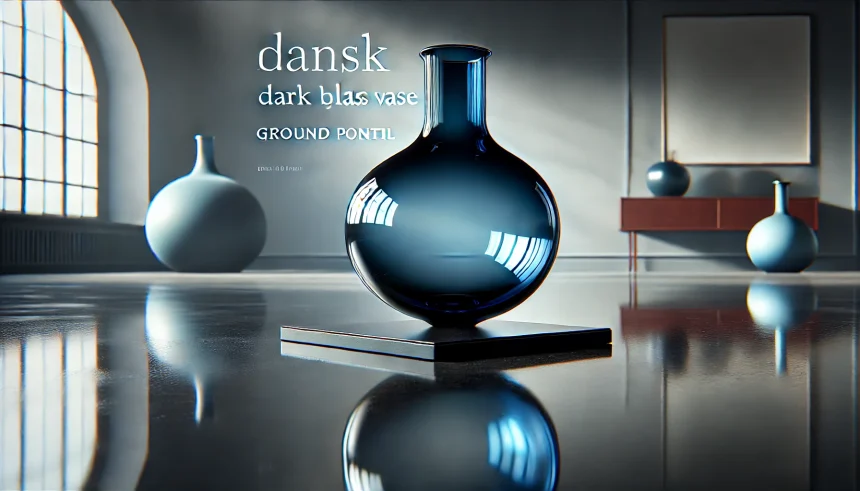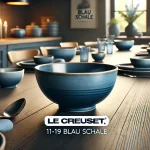Dansk is a brand that has made a name for itself in the world of glassware with its elegant and distinctive designs. Among its many sought-after creations is the Dansk Dark Blue Glass Vase Ground Pontil, which carries with it a signature feature – a ground pontil.
This vase is a remarkable example of hand-blown craftsmanship and mid-century modern design, offering both aesthetic beauty and functional appeal. The combination of its deep, rich blue color, intricate shape, and handmade production makes it a standout piece in any collection or home décor setting.
Origin and History
Dansk was founded in 1954 by Danish designer Jens Quistgaard. The brand quickly gained recognition for its high-quality, modern Scandinavian designs, which included everything from cookware to glassware. Dansk glassware reflects the minimalist yet sophisticated style of mid-century modern design, which became internationally celebrated during the 1950s and 1960s.
The dark blue glass vase with a ground pontil is one of the brand’s iconic pieces from this era. During this time, Danish glassmakers were known for their ability to combine practicality with art, making every piece functional while also serving as a decorative object. Dansk embraced this approach, and its glass vases became highly prized for their craftsmanship and unique color schemes, including the rich blue shades that make this vase so special.
Characteristics of the Dansk Dark Blue Glass Vase
Color and Design
The dark blue glass vase stands out due to its captivating hue, often described as a deep, royal blue or navy blue. This intense color is achieved through the careful mixing of pigments with the glass during the crafting process. The color is both rich and vibrant, giving the vase a timeless and elegant appearance. The shape of the vase varies, but many feature a gently flared neck, a rounded body, and a stable base, all contributing to the vase’s graceful proportions.
Material and Craftsmanship
Dansk vases are known for being made from high-quality glass. The glass is blown by hand, a process that requires skill and precision. The vase is shaped while the glass is still molten, allowing the artisan to create the desired design. Once the vase has been shaped, it undergoes a cooling process to solidify the structure. This method of handcrafting ensures that each vase is unique, with slight variations in shape and finish that add to its charm.
Ground Pontil Feature
One of the defining features of the Dansk dark blue glass vase is the ground pontil mark on its base. The pontil is a small, circular mark left at the spot where the vase was detached from the glass-blowing rod. After the vase is finished, this mark is carefully ground down to a smooth finish, leaving a polished base. The ground pontil serves as a sign of the vase’s handmade origin and is a mark of authenticity for collectors.
Markings and Labels
Some Dansk vases come with a “Hand Made – Quality” label, which highlights the craftsmanship involved in creating the piece. However, many older Dansk glass items, including the dark blue vase, may not bear any labels or markings at all. Despite the lack of a visible signature, these vases are easily recognizable due to their distinctive design and quality.
Glassmaking Process
The process of creating a Dansk dark blue glass vase begins with gathering molten glass from a furnace. The glass is then blown into the desired shape using a long tube called a blowpipe. The artisan works carefully to control the size and shape of the vase, making adjustments with tools while the glass is still soft. The pontil rod is used to hold the vase during this shaping process. Once the vase reaches the desired form, the pontil rod is removed, leaving a small, rough mark at the base. This mark is ground down to create a smooth, polished surface.
The process of hand-blowing glass is one of the oldest techniques in the craft of glassmaking. It requires a high level of expertise, which is why hand-blown glass vases like the Dansk dark blue vase are considered valuable. Each vase is unique, and the handmade nature ensures that no two vases are exactly alike.
Collectibility and Value
Dansk dark blue glass vases have become highly sought after by collectors. Their combination of artistic design, high-quality craftsmanship, and historical significance makes them valuable additions to any collection. Collectors are particularly drawn to pieces from the mid-century modern period, when Dansk’s glassware was at the height of its popularity.
The value of these vases can vary depending on several factors, including the condition of the vase, its rarity, and whether it has any labels or signatures. Vases with unique shapes or discontinued designs tend to be more valuable. Condition is also an important factor; vases that are free of chips, cracks, or scratches are considered more desirable.
Dansk glass vases can often be found in antique shops, vintage stores, and online marketplaces such as eBay and Etsy. They are prized not only for their beauty but also for their ability to hold or appreciate in value over time.
How to Identify Authentic Dansk Dark Blue Glass Vases
Recognizing Authentic Dansk Craftsmanship
One of the easiest ways to spot an authentic Dansk vase is by examining its craftsmanship. Dansk glass pieces are known for their high-quality finish, with smooth edges and well-balanced proportions. The dark blue color should be consistent throughout the vase, without any streaks or blemishes.
Checking for Color Consistency and Quality
Authentic Dansk glass vases will have a rich, even color that reflects light beautifully. The dark blue hue should be deep and vibrant, giving the vase a luxurious appearance. If the color appears faded or uneven, it may not be an authentic Dansk piece.
Identifying Ground Pontil Marks
A key feature of the Dansk dark blue glass vase is the ground pontil mark found on the bottom. This mark is a clear sign of the vase’s handmade origin and is a distinguishing factor for collectors. If the bottom of the vase is too perfectly flat or lacks any visible mark, it may not be a genuine Dansk piece.
Compared with Other Scandinavian Glass Brands
While other Scandinavian glass brands, such as Orrefors or Kosta Boda, may produce similar designs, Dansk vases have a distinct aesthetic. Dansk’s designs are often more minimalist, with an emphasis on clean lines and simple shapes. Recognizing these design elements can help in identifying an authentic Dansk vase.
How to Care for and Display the Vase
Best Practices for Cleaning
To maintain the beauty of the Dansk dark blue glass vase, clean it gently with a soft cloth and lukewarm water. Avoid using abrasive cleaners or harsh chemicals, as these can damage the surface. For deeper cleaning, a mild dish soap solution can be used, but make sure to rinse thoroughly afterward.
Proper Storage and Handling
Always handle the vase with care, especially the neck and body, as the glass can be delicate. When not in use, store the vase in a safe place where it won’t be at risk of being knocked over. Displaying the vase on a sturdy shelf or mantel will help protect it from accidental damage.
Displaying Techniques
The dark blue color of the vase makes it ideal for displaying in areas where it can catch the light, such as near windows or on well-lit shelves. It works well as a standalone piece on a mantel, side table, or as part of a decorative arrangement.
Conclusion
The Dansk Dark Blue Glass Vase Ground Pontil is a true work of art, combining functional design with exquisite craftsmanship. Its deep blue color, hand-blown construction, and the distinctive ground pontil mark make it a collector’s treasure.
Whether you’re a seasoned collector of Scandinavian glassware or simply someone who appreciates beautiful, high-quality design, the Dansk Dark Blue Glass Vase Ground Pontil is sure to add elegance and sophistication to any collection or home décor. Its timeless appeal, paired with its rarity, ensures that it remains a highly sought-after piece in the world of vintage glass.













